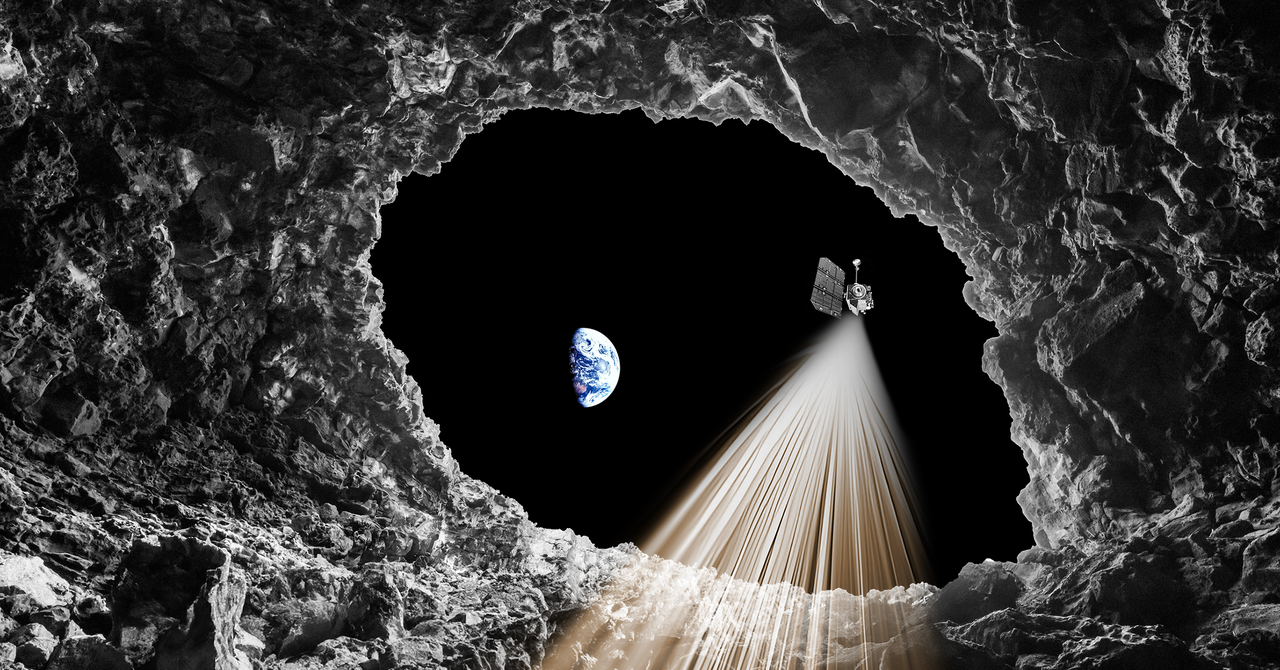
This story originally appeared on WIRED Italia and has been translated from Italian.
Their existence had been disputed for decades, but now we can finally we can say for sure: There are caves beneath the surface of the moon. This week, an international research team led by the University of Trento in Italy published a study in Nature Astronomy showing evidence of accessible areas beneath the lunar surface. The discovery could be crucial for the construction of future colonies on the moon.
For more than half a century, astronomers have been theorizing about the existence of a network of caves and tunnels beneath the moon’s surface. In 2009, a team of experts identified a deep hole on the lunar surface, supporting the hypothesis that underground caves may have formed on the moon as a result of lava cooling below the surface. This week’s discovery demonstrates the existence of longer underground conduits. “These structures had been hypothesized for more than 50 years, but this is the first time ever that we have demonstrated their existence,” says Lorenzo Bruzzone of the University of Trento, coordinator of the research.
To make this discovery, the researchers reviewed data captured in 2010 by the radio-frequency instrument aboard Nasa’s Lunar Reconnaissance Orbiter, a spacecraft that has been orbiting the moon since 2009, mapping its surface and searching for potential landing sites for future missions. Based on the images, the researchers were able to reveal, hidden in the region of the Sea of Tranquility, an emptied lava tube that could one day be accessible to astronauts.
“We analyzed these images with complex signal processing technologies recently developed in our laboratory and found that part of the radar reflections from an area of the Sea of Tranquility can be attributed to an underground conduit,” says Bruzzone. “This discovery provides the first direct evidence of an accessible rock tunnel beneath the surface of the moon.” Analysis of the data also enabled the researchers to construct a model representing the initial part of the tunnel. “It is very likely to be an emptied lava tube,” says Leonardo Carrer, a researcher at the University of Trento and first author on the paper.
The findings could have important implications for future lunar missions. Meteorites and radiation make the moon’s environment hostile to humans—cosmic and solar radiation is up to 150 times more powerful than that experienced on Earth, and the threat of meteorites is continuous. Sheltered areas therefore need to be found for probe landing sites or for the construction of long-term lunar infrastructure. Astronauts could therefore one day find shelter in these caves.
Services Marketplace – Listings, Bookings & Reviews
